Nutrition Facts Label
One of the most important elements of following a healthy eating plan is learning how to read the nutrition facts label on food packaging. Learning to decipher this information will help you to make good choices about the serving sizes and foods that you choose to eat on a daily basis.
Each food label in the United States is formatted in a similar way, so once you learn how to read the information you will always be able to find the nutritional statistics for any type of food. There are six essential elements of a food label to help you understand the impact that it will have on your health:
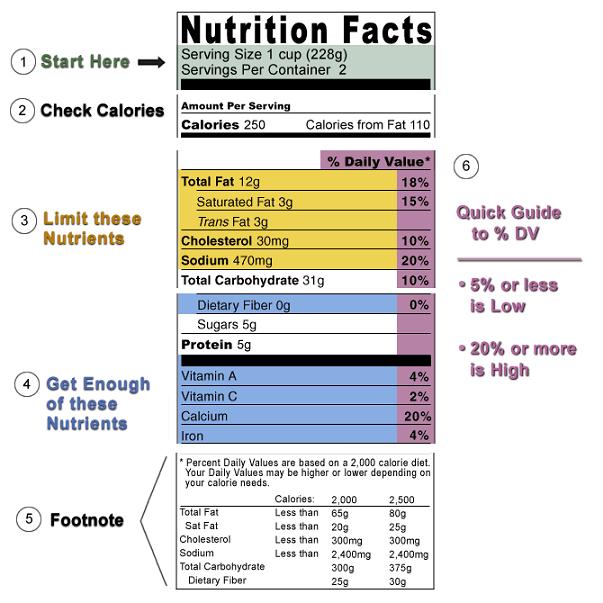
Nutrition Facts Label
1. Serving Size:
The serving size on a package tells you what portions should be served in order to achieve the nutrition information that is listed. Typically, the serving size is detailed in a measurement that is easy to locate, such as cups or tablespoons. Occasionally, an item will list the quantity instead of measurement. For example, a package of cookies may list the serving size as “2 Cookies” instead of a unit amount. Also, the serving size will always list a metric amount, such as the weight in grams.

The second line on this section of the nutrition facts shows how many are in each container. This information can be very helpful if you don’t want to measure out the food for each portion. On the corresponding image, it shows that there are 2 servings in the container, so the food should be divided in half when it is served. On the other hand, if you choose to eat all of the food that is prepared, you should double the nutrient numbers in order to get accurate information for the portion size that you ate.
2. Check Calories:
Calories are a measurement of energy, and different people require different calories amounts each day. Males need to consume more calories than females, and adults consume more calories than infants. Additionally, calorie consumption will change depending on the activity level of the person. There are many different resources available to help you determine how many calories you should be eating every day.
![]()
If you are trying to lose weight, then it is a good idea to eat a moderate amount of calories each day. When you are reading the nutrition facts on a package, remember that the calories listed correspond with the serving size. So, in order to get an accurate calorie count, it is necessary for you to eat the serving size that is listed in section 1.
Nutrition fat labels will list the amount of calories per serving, as well as the number of calories that are derived from fat. Generally, it is better to limit the number of calories from fat.
3. Limit These Nutrients:
Section 3 for the nutrition facts label shows a list of food items that need to be limited, such as fat, cholesterol and sodium. Research studies have shown that there are correlations between eating these unhealthy nutrients and a higher risk of certain types of disease. Generally, you want to eat foods that have a lower amount of fat, cholesterol and sodium in order to maintain good health.
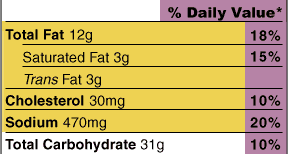
The information provided for fat can be helpful, because it divides out the details into two sections: saturated fat and trans fat. Different types of fats have the same amount of calories, but some types are more harmful than others. Saturated fats are found mostly in animal products, coconut oil, and palm oil. Eating too much saturated fat may lead to bad cholesterol levels. Trans fats are also known as unsaturated fat, and they can be bad for your health because they raise bad cholesterol levels and decrease good cholesterol levels.
4. Get Enough of These Nutrients:
The next section on the nutrition facts label lists out nutrients that you should eat. Eating a healthy diet will help you to get enough of these nutrients each day. The information in section 4 can vary depending on the nutrients that are available in the specific food package that you are reading. For example, some nutrition labels will list additional types of essential vitamins and minerals to help you have a better understanding of the nutrients that you are gaining when the food is eaten.
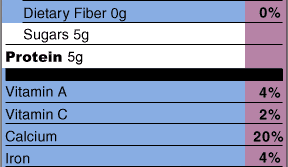
5. Footnote:
Section 5 on the nutrition facts label shows a footnote of information, and this is basically a quick reference guide for daily dietary needs. This footnote clarifies the fact that the daily value % numbers are based on a person that consumes 2,000 calories each day. Keep in mind that the percentages change if you are consuming a lower or higher amount of calories.
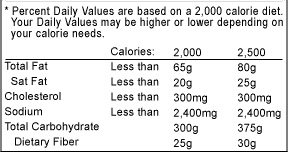
6. Quick Guide to Dietary Values:
Looking down the right side of the nutrition label, you can see that there are % daily value numbers listed. These percentages are derived based on a 2,000 calorie diet, to the percentages are just giving you general rule of thumb to help you understand how much of each nutrient you should be consuming daily.

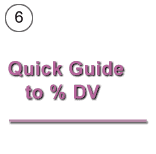
For example, on this label it shows that 12g fat is 18% of your daily value, based on a 2,000 calorie diet. But, if you are eating 2500 calories each day, the percentage would actually drop to 15% so that it matches up with the total recommended intake for a higher calorie diet.
Looking at the daily value amounts will give you a frame of reference in order to determine if the food is high in good nutrients and low in nutrients that should be limited. The percentage numbers do not add up to 100%, instead they are focused on showing the daily amount that is needed for each individual nutrient.
Remember that it is necessary to follow the serving size in order for all of the nutrition details to be correct. Many people make the mistake of not paying attention to their serving size, which means that they mistakenly consume more calories than they think they are eating. Food packaging can be somewhat deceptive at times, because what may seem be a single serving package, such as a can of soda, may actually have several servings within the package.

 Facebook
Facebook  Twitter
Twitter  RSS
RSS







